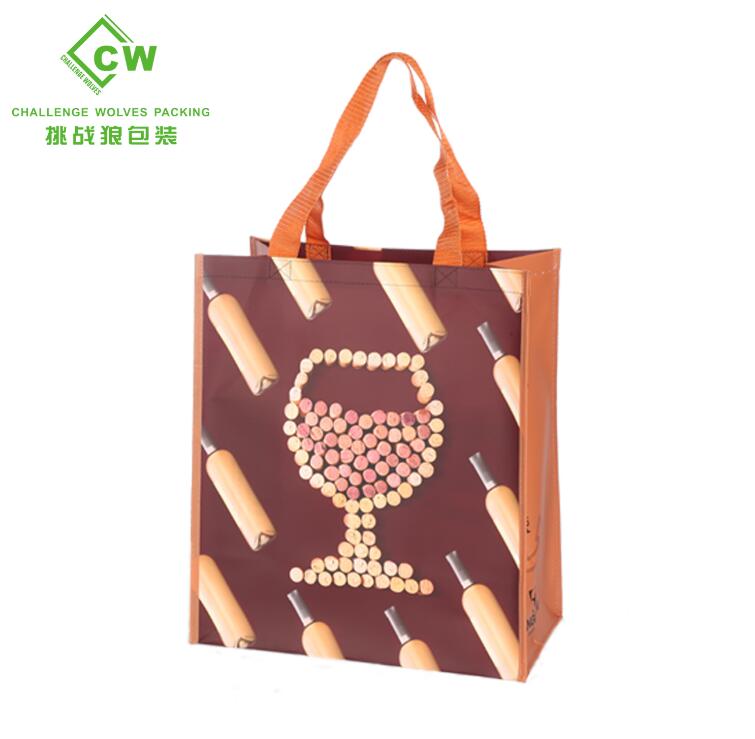Closing the Loop: Understanding the Recyclability of Non-Woven Bags
2024-03-04
Introduction:
As the world continues to grapple with the environmental challenges posed by single-use plastics, the demand for sustainable alternatives has surged. Non-woven bags have emerged as a popular choice among eco-conscious consumers due to their durability and reusability. However, questions remain regarding their end-of-life disposal and recyclability. In this blog, we'll delve into the recyclability of non-woven bags, exploring the processes involved, challenges faced, and the role consumers play in closing the recycling loop.
1. Composition of Non-Woven Bags:
Non-woven bags are typically made from synthetic materials such as polypropylene (PP), polyester (PET), or a blend of various fibers. These materials undergo a manufacturing process where fibers are bonded together using heat, pressure, or chemicals to create a durable and versatile fabric. While non-woven bags offer numerous environmental benefits, including reduced plastic pollution and resource conservation, their recyclability depends largely on the specific materials used in their production.
2. Challenges in Recycling Non-Woven Bags:
One of the primary challenges in recycling non-woven bags lies in the complexity of their composition. Unlike traditional plastics, which are often composed of a single polymer type, non-woven bags may contain multiple layers or blends of different materials, making them difficult to recycle using conventional methods. Additionally, contaminants such as ink, adhesives, or food residues can further complicate the recycling process and reduce the quality of recycled materials.
3. Recycling Processes for Non-Woven Bags:
Despite these challenges, advances in recycling technologies have made it possible to recycle certain types of non-woven bags. Mechanical recycling, which involves shredding and melting plastic materials to create new products, is one method used to recycle non-woven bags. In this process, non-woven bags are sorted, cleaned, and processed into plastic pellets or flakes, which can then be used to manufacture new products such as textiles, furniture, or packaging materials.
4. Chemical Recycling and Upcycling:
Chemical recycling techniques, such as depolymerization or pyrolysis, offer alternative pathways for recycling non-woven bags. These processes break down plastic materials into their constituent monomers or convert them into synthetic fuels or chemicals. While chemical recycling technologies show promise in addressing the challenges of recycling complex plastic materials, they are still in the early stages of development and may not be widely available or economically viable.
5. Consumer Education and Participation:
Consumer education and participation play a crucial role in closing the recycling loop for non-woven bags. By understanding the composition of non-woven bags and the challenges in their recycling, consumers can make informed choices that support recycling efforts. This includes properly disposing of non-woven bags in recycling bins, avoiding contamination by removing any foreign materials, and supporting initiatives to improve recycling infrastructure and technology.
6. Sustainable Alternatives and Circular Economy:
While recycling offers a valuable solution for managing end-of-life non-woven bags, efforts to promote reuse, reduce consumption, and transition to more sustainable materials are also essential. By embracing a circular economy model, where products are designed for longevity, reuse, and recyclability, we can minimize waste and maximize resource efficiency. Sustainable alternatives to non-woven bags, such as biodegradable or compostable materials, further support these efforts by offering environmentally friendly options for consumers.
Conclusion:
While the recyclability of non-woven bags presents certain challenges, ongoing advancements in recycling technologies and consumer participation offer promising avenues for closing the recycling loop. By understanding the composition of non-woven bags, supporting recycling initiatives, and embracing sustainable alternatives, we can move towards a more circular and sustainable approach to managing plastic waste. As we continue to strive for a cleaner and greener future, the recyclability of non-woven bags remains an important aspect of our collective efforts to protect the planet for future generations.



